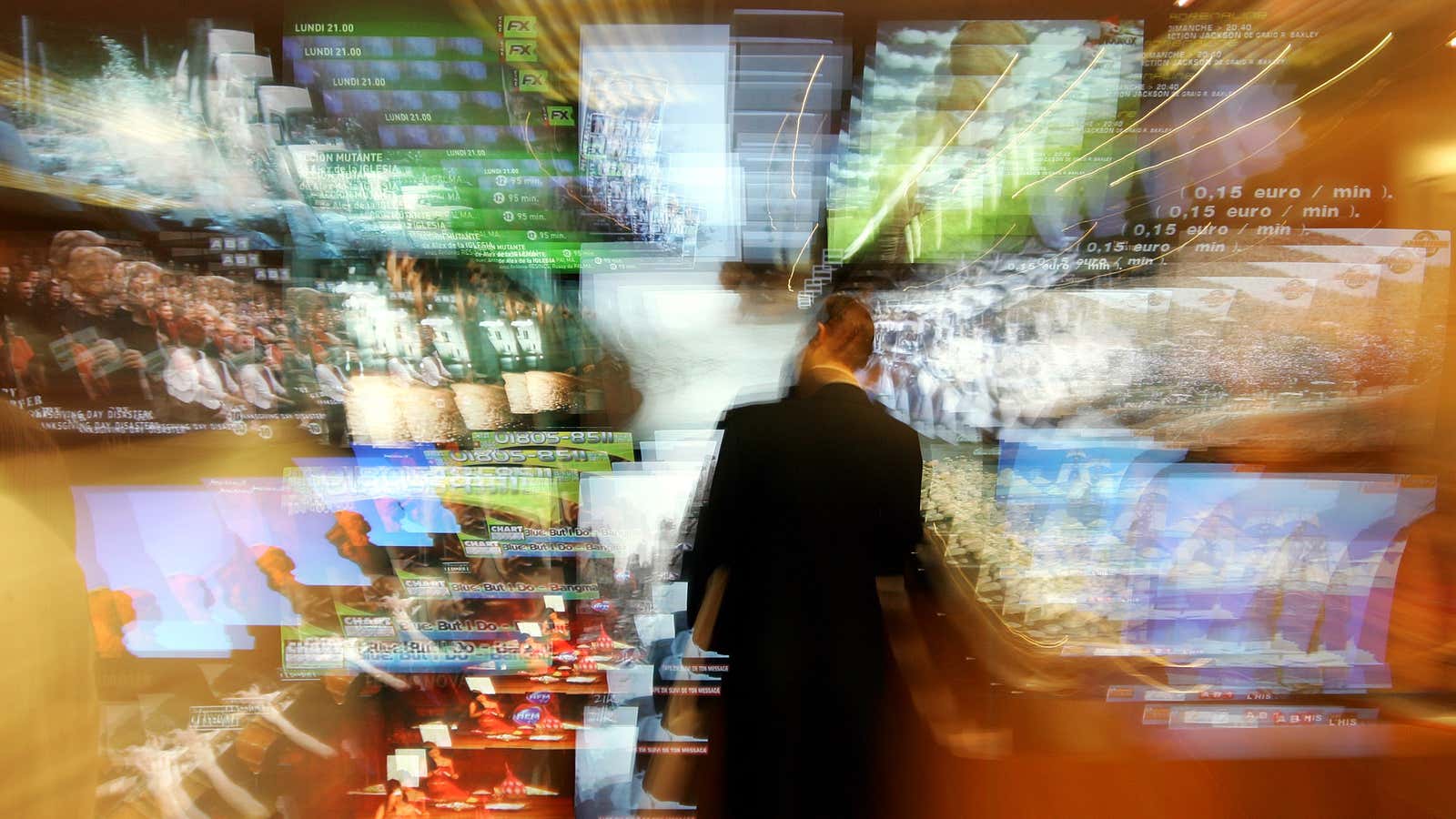This story is part of What Happens Next, our complete guide to understanding the future. Read more predictions about the Future of Home.
“Home” as an institution has become troubled. Silicon Valley can’t afford to house itself. Real estate has become an investment instrument. Rental services like Airbnb have disrupted home ownership. The middle class has been declining for a generation. The world’s population is aging.
The Internet of Things is a cheap, rapid, 21st-century response to the abject failures of 20th-century living. And it is also the next chapter in the epic struggle of property relations.
Before IoT appeared in the 1990s, “home automation” provided all the services that wealthy, technophile home owners were willing to pay for: fancy lighting, clever thermostats, home theaters, various flavors of remote-control doors and windows, and, for the paranoid, scary anti-burglar security and surveillance. However, this horde of devices was fragmented, fussy, and hard to maintain. They sold consumers “convenience” while merely shuffling the complexity around.
In the 2010s, IoT offered us the modern, exciting prospect of sweeping this complexity under the rug by having professional programmers running your home. In this utopia, all our IoT devices are smoothly integrated with one wireless communication protocol, allowing us to manage our housing much like we manage our smartphone screen. We were told that these smoothly connected devices would unite in a peaceful, rationally organized “ecosystem,” behaving as the internet’s version of a butler, housekeeper, janitor, repairman, and private security guard.
But the Internet of Things has been a dud with consumers. IoT thermostats do okay, the smartphone-controlled door locks have a niche, but only the “smart speaker,” such as Amazon’s Alexa and her clique of chattering rivals, has been met with real enthusiasm: An estimated 57 million US adults now use a smart speaker at least once a month. Homes are now built and sold with the assumption that the yeoman owner is the master of what goes on, and his pitiless, accurate, coldly robotic voice servants will serve him.
It took decades to turn our homes into these computers where we eat, bathe, and sleep. But in much the same way we used to think of the internet as being crammed inside plastic IBM-branded commodity boxes, in the future, our homes will no longer be confined to the walls in which we live.
The old physical barriers of that IBM computer evaporate into internet air. The closed door that once firmly demarcated “private” from “public” becomes an access point. House walls are porous to data streams, and those streams are pored over by deep-learning algorithms that can forecast household demand before it ever takes place. (Milk approaching its used-by date? Trash bags running out? Sleep disrupted by early-morning autonomous package delivery?) The user—formerly known as the homeowner—no longer makes choices, because his alleged needs are anticipated ahead of time.
The future rolls in, and you find that you don’t “own” your house with paper contracts. Toilets have privacy policies. Household automata capture the low-hanging fruit such as vacuuming. They then take on unmanned delivery services.
With every dot.com blow-up and defeat, tech comes back, faster, smaller, cheaper, and with more intense and subtle mechanisms of surveillance and remote control. Bit by bit, year by year, the old resistance crumbles away. By 2050, the old-fashioned homeowner will be just plain old, like some once-glamorous director of analog film who stares in bemusement at the influencers on YouTube.
And the young people? They don’t notice the change much. They worry about the future, instead.
This story is part of What Happens Next, our complete guide to understanding the future. Read more predictions about the Future of Home.
